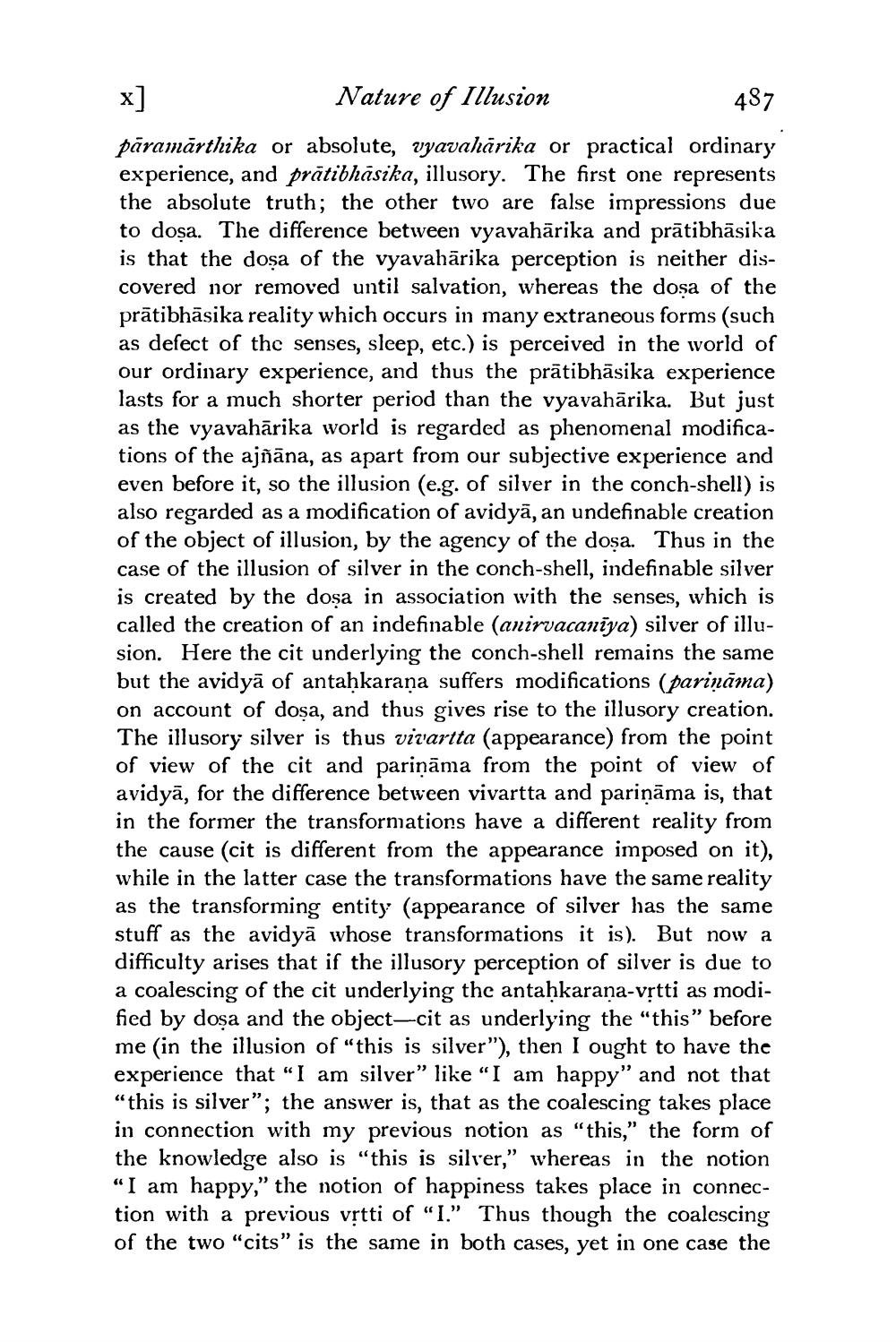________________
Nature of Illusion
487
pāramārthika or absolute, vyavaharika or practical ordinary experience, and pratibhasika, illusory. The first one represents the absolute truth; the other two are false impressions due to dosa. The difference between vyavahārika and prātibhāsika is that the doşa of the vyavahārika perception is neither discovered nor removed until salvation, whereas the dosa of the prātibhāsika reality which occurs in many extraneous forms (such as defect of the senses, sleep, etc.) is perceived in the world of our ordinary experience, and thus the prātibhāsika experience lasts for a much shorter period than the vyavahārika. But just as the vyavahārika world is regarded as phenomenal modifications of the ajñāna, as apart from our subjective experience and even before it, so the illusion (e.g. of silver in the conch-shell) is also regarded as a modification of avidyā, an undefinable creation of the object of illusion, by the agency of the dosa. Thus in the case of the illusion of silver in the conch-shell, indefinable silver is created by the doşa in association with the senses, which is called the creation of an indefinable (anirvacanīya) silver of illusion. Here the cit underlying the conch-shell remains the same but the avidyā of antahkarana suffers modifications (pariņāma) on account of dosa, and thus gives rise to the illusory creation. The illusory silver is thus vivartta (appearance) from the point of view of the cit and pariņāma from the point of view of avidyā, for the difference between vivartta and parināma is, that in the former the transformations have a different reality from the cause (cit is different from the appearance imposed on it), while in the latter case the transformations have the same reality as the transforming entity (appearance of silver has the same stuff as the avidyā whose transformations it is). But now a difficulty arises that if the illusory perception of silver is due to a coalescing of the cit underlying the antahkarana-vịtti as modified by dosa and the object-cit as underlying the “this" before me (in the illusion of “this is silver"), then I ought to have the experience that "I am silver" like “I am happy" and not that "this is silver”; the answer is, that as the coalescing takes place in connection with my previous notion as "this," the form of the knowledge also is "this is silver," whereas in the notion “I am happy,” the notion of happiness takes place in connection with a previous vịtti of "I.” Thus though the coalescing of the two "cits" is the same in both cases, yet in one case the




